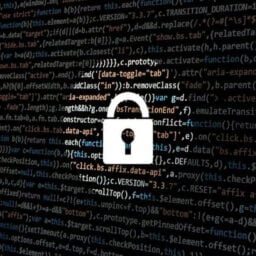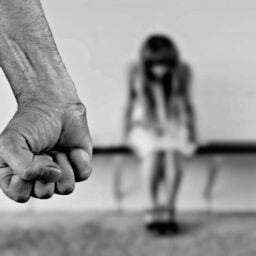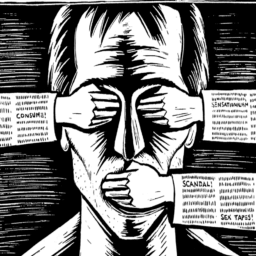“To promote practical change within the system, much more far-reaching intervention than law reform is needed.”
On October 24, after the India-Pakistan cricket match, UP Chief Minister Yogi Adityanath issued a statement warning of “sedition”[1] charges if anyone was caught celebrating Pakistan’s victory, “the police took this statement as a directive to take action”. Police resorting to brutal force and torture frequently occurs in India, with law enforcement almost never facing consequences for such actions, which is a clear and consistent violation of human rights. The Lathi- charge[2] in Karnal on August 28 on peacefully protesting farmers on three contentious farm laws, brutal treatment of the minorities during the Delhi riots in December 2020 and the list goes on, and of course, the backdrop of COVID-19 means that the police are resorting to excessive violence with the excuse of their victims violating state-imposed restrictions.
THE HORROR OF POLICE BRUTALITY
Despite evidence of widespread police brutality, no significant grassroots movement has arisen. For many Indians, day-to-day crime is the more pressing issue. Media attention in the George Floyd case raises a lot of concern about police brutality but India had little to debate upon it, in fact in the horrific case of gangster Vikas Dubey’s encounter UP police got “clean chit”[3] and applauded by the government for their action.
According to National Campaign against Torture report, The National Human Rights Commission of India recorded 1680 cases of custodial deaths in the year 2020. Out of these, 1569 deaths took place in judicial custody and 111 deaths took place in police custody.[4] The report throws light on how the state and the National Human Rights Commission (NHRC) exploited the ambiguities in the law to cover up fake encounters and shield the accused.
THE TRUTH BEHIND “POLICE ENCOUNTERS”
Civil Society groups have long argued that so-called Police encounters are not “spontaneous encounters”[5] and need of the hour as claimed by the police rather they are planned “murder” that too with legal backing. The police may be motivated by larger ends – either to win public favor or in furtherance of police officers’ own political or criminal connections.
Police encounters and extrajudicial killings have gained a veneer of respectability in the colour of “instant Justice” which is also backed by many films. In the words of former Supreme Court Judge Madam B. Lokur these are “nothing but a cold-blooded murder”[6]. As the report unravels[7], the state uses the euphemism “police encounters” to validate policing methods and deflect from legal accountability. It allows the police and security forces to disregard the rule of law and commit grave human rights violations and instead promotes vigilante justice by celebrating the actions of police officials in eliminating alleged criminals without accountability.
The police all over the country became brutal in their approach towards citizens. Flouting the laws rather than protecting the rule of law is becoming the new norm. When the CM openly says “Thok Diya Jayega”[8] (will be shot), it is a green signal for police to ignore rule of law while dealing with the cases. Thousands of instances have proved the police is not only insufficient and unprofessional in their conduct of its core function but its leaders also lack mental spirit even manufacturing a plausible story to shadow rank complicity and unlawful acts. It is need of the hour to question why India with such a high number of custodial deaths and fake encounters, has there not been any mass movement yet? Why does the vicious conduct of police receive such a different reaction in our country? One reason might be the delay in gaining significant media attention. The hideous police brutality that shook the US in the case of George Floyd is a daily episode in India but unfortunately doesn’t spark outrage yet.
CONSTITUTIONAL TENABILITY
The principle of natural justice had been held an inherent part of Article 21 in the case of “Kartar Singh vs. the State of Punjab”[9] by the apex court. Article 21[10] states that “No person shall be deprived of his life or personal liberty except according to a procedure established by law”. Extrajudicial killings by the executives on the spot and bringing so-called “instant justice” deny the accused of their right to be given notice and opportunity to be heard, defying the principle of “audi alteram partem” i.e. Article 21 which is one of the fundamental rights. Section 49 of the Indian Criminal Procedure Code[11] specifically states that only “necessary restraint” can be used to prevent danger. On the face of it, there seems to be a distressing contrast between the monstrous actions of the police and the laws. Delving more into the interpretation of the statute, the loophole in the word “necessary” implies that the executive officers have the digression to decide what is deemed “necessary” and not; surely this is a cherry on the top situation for police and gives a scope to do gross violation of human rights.
VIABLE SOLUTION
Leadership has to play a proactive role in ensuring the proper conduct of the police not only on paper but on the ground. Leadership reforms should be an urgent call. It is extremely important to ensure that the police – which is the most viable face of the government to the common people – redeem the trust through proper and lawful conduct and the government should have to put their trust in the judiciary for giving punishment to the accused, giving judgment and bringing justice is the work of the judiciary and not of the government. SC gave a historic judgment in the case of “Prakash Singh vs. UOI”[12] in 2006 and gave 7 directive principles to ensure checks and balances should be urgently implemented. The purpose of a police force in a free society is to promote public safety and uphold the rule of law so that individual liberty may flourish. Trust and accountability between the police and the communities they are sworn to protect are essential to advancing these goals.
Author(s) Name: Apeksha Mishra (National University of Study and Research in Law, Ranchi)
References:
[1] Niranjan, ‘File sedition case against those celebrating Pak’s win’<https://Livemint.com> accessed on 6th November 2021
[2] Amit Bhardwaj, ‘After police lathi-charge protesters in Karnal’<https://Indiatoday.in>
[3] Santosh Sharma, ‘Vikas Dubey Encounter Case’ accessed 9th November 2021
[4] National Human Rights Commission Report <https://dw.com>
[5] Kenneth Lee Kinsey. ‘Use of Force and Perceptions of Public Attitude Held by Police Trainers’<https://scholarworks.waldenu.edu>
[6] V. Venkatesan, ‘Normalizing extrajudicial killings in UP’ (2021) <https://theleaflet.in> accessed 7th November 2021
[7] National Crime Records Bureau on Police Encounter. Vol.III, Pg.14
[8] Rajat Sharma, ‘Thok Denge’ accessed 9th November 2021
[9] Katar Singh vs. The State of Punjab [1961 AIR 1787, 1962 SCR (2) 395]
[10] INDIA CONSTI. Art. 21
[11] Section 49 of the Code of Criminal Procedure, 1973
[12] Prakash Singh vs. UOI (2006) 8 SCC 1
















